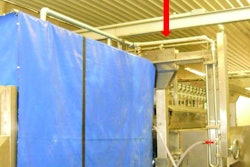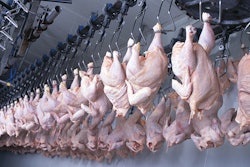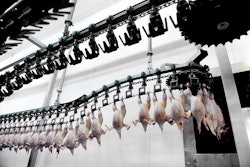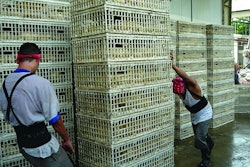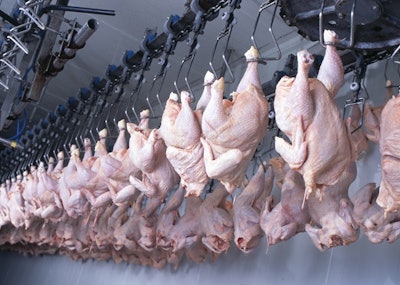
Proposed framework from the U.S. Department of Agriculture (USDA) Food Safety and Inspection Service (FSIS) designed to improve Salmonella control in poultry would require enhanced establishment monitoring procedures throughout slaughter and processing operations.
Unveiled in October 2022, the framework has three components. The first component focuses on preharvest Salmonella control, meanwhile “component two is all about the quantitative measures,” explained Bill Potter, Ph.D., Elanco food safety technical advisor.
For example, the proposed modifications include changes in location for multipoint sampling and the use of statistical process control.
Bio-mapping pathogen control
Some of these strategies are already in play, while others will need to be adopted.
“Many poultry plants have been evaluating things like pre-evisceration carcasses – which we call rehang carcasses – and the post-show carcass for a long time,” he added. “But some plants have found that going to a more detailed bio-mapping approach can give even further assistance for this component.”
This sort of approach systematically monitors the effectiveness of Salmonella interventions throughout the processing plant and should include testing of incoming birds, post-scald, pre-evisceration, post bird washers, pre and post chillers and before and after antimicrobial sprays and dips.
In addition, new technologies, such as quantitative PCR, most probable numbers (MPN) and automated mini-MPN methods, make it easier than ever to quantify the Salmonella loads in a poultry flock.
Moving toward data-driven decisions
“In component two, I think the concept of using a statistical process control approach is going to be important to understanding what your upper threshold or upper control limits in the plant are,” Potter said.
Larger poultry companies that have multiple processing plants can compare and contrast this data to learn more about which interventions work best against Salmonella.
Using the continuous improvement approach of “Plan-Do-Check-Act,” poultry processors can use this data to drive decisions to improve Salmonella control.


